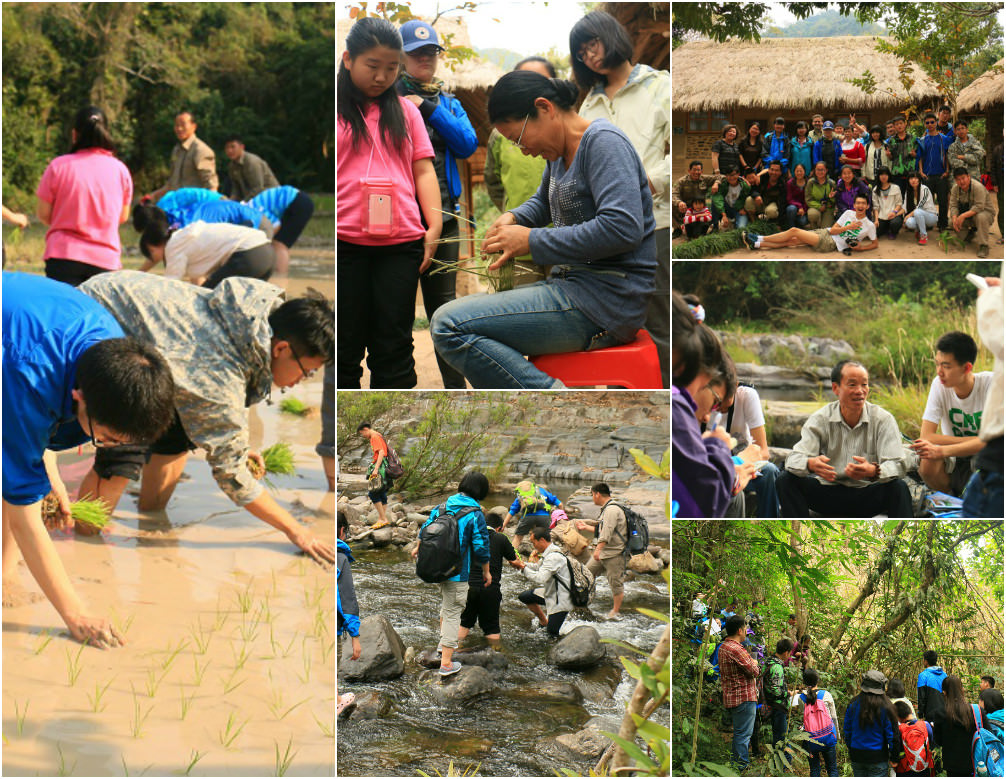Eco-tourism in Daoyin, Hainan
Daoyin is a remote Li minority village nestled deep in the foothills of Yinggeling, Hainan Island. In early February, Beijing-based Eco Action, Yinggeling National Nature Reserve and Kadoorie Conservation China (KCC) organized an eco-tour for 20 young urbanites from mainland China.
Entrance to the village is via a four-hour hike, much of it wading through the Nankai River. The scenery was truly beautiful but it was a tough trek. Participants were able to get close to nature and experience the culture of the Li people during the two-day trip. They got their hands dirty too – they planted rice seedlings and conducted a biodiversity survey in the forest with the help of villagers and Reserve wardens. The tour was designed to inspire young people to take an interest in science, biodiversity conservation and the protection of ethnic cultures. The tour was also rewarding for the villagers because it gave them a sense of pride in their culture and their home. They were able to experience the beauty of the Hainan landscape through the eyes of their guests.

Luo Peng Founder of Eco Action
This trial eco-tour in Daoyin was a great success. The young people who took part had a great time and also gained a lot of new knowledge. They experienced thinking like a scientist, conducting research, practicing critical thinking, and discussing the conflict between development and conservation. They also got a chance to learn about the rights of minority peoples. The tour also taught the villagers that to attract outside help to support Daoyin’s sustainable development they have to protect their forests and natural resources. All of us showed our appreciation for the kindness of the villagers for hosting us, and I believe this helped them feel proud of their culture and their village and that is a much more precious gift than the money they earned from this trip.
This eco-tour was aimed at helping villagers understand what they want out of development. They were given lots of practice in explaining their culture to outsiders and this is a great skill because it gives them an alternative livelihood – tourism. This means they don’t have to solely rely on using natural resources to make a living, and they can work in harmony with conservation efforts. These are the principal values and goals of eco-tourism and sustainable tourism.
We have a long way to go. However, we are very happy and proud to take part in shaping eco-tourism in China!
Thoughts from the participants
Getting to Daoyin is tough; literally and practically.
In the 1950s, the people left the village. They wanted to join the rest of the civilized world, but they felt rejected. They had no choice but to return.
Rubber is a major source of local income, however, rubber prices have dropped drastically in recent years. The more we talked with them, the more we wanted to help them!
Before we left Daoyin, we wanted to do something for the villagers, so we offered to plant some rice seedlings in the paddy field. This was the first time we had ever done farm work and we almost couldn’t manage to walk in the soft mud! In the end, we didn’t plant the seedlings properly, but we really enjoyed it!
We also bought some local produce – fresh honey and some handicrafts. We snapped them all up as soon as the villagers showed us! We felt really grateful to the villagers and wanted to help them in any way we could.
Our experiences in Daoyin made us think deeply about the future of the village. While the villagers are doing their best to conserve the environment, life is tough in this remote corner of the forest. Finding alternative livelihoods for the villagers and preserving the local culture are huge challenges for the Nature Reserve.

